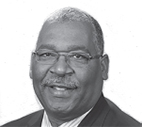
DANIEL McCLOUD
Early attempts at establishing education for African Americans showcased stark inequalities between the African American schools and their curricula and those of their white counterparts. From the very outset, schools and curricula were differentiated to establish a hierarchy of both educational and social stratification (Sherer, 1977). Those who supported a vocational-based curriculum also believed that the traditional liberal arts education, mainly reserved for the white elite, was not for African-Americans. Also, exposure to the college preparatory curriculum was nonexistent.
Not surprisingly, an abundance of individuals came forth to provide models and rationales for what higher education should look like for the newly freed African Americans. Samuel Chapman Armstrong was one such individual. Armstrong understood white southerners’ dilemma and who believed that the future of the country depended on the type of education that newly freed slaves received. Armstrong’s solution was to educate African Americans, but in such a way that appeased whites and pacified the African Americans. Of course, his proposed solution to African American higher education in deficit ideology had deficit ideology at its root.
However, unlike the proponents of eugenics and scientific racism, Armstrong believes that African Americans were mentally capable but morally weak. It was because of this perception of moral weakness that Armstrong sought to relegate Black workers to the lowest forms of labor, thus maintaining the oppressive social hierarchy that had existed for years. Key to this process was the establishment of a model of higher education that would: (a) train a workforce that the South would desperately need, and (b) continue to perpetuate the falsehood of Black inferiority, not only in the minds of whites but African Americans as well (Watkins, 2001).
The model for these institutions, based on the “Hampton Idea,” was to be carried out by Black instructors at existing industrial Normal schools. This form of instruction tended to be labor focused and served two primary purposes. Firstly, it satisfied African Americans who were seeking any education, and secondly, it maintained the pecking order of the South for Black labor. This argument represented an effort to promote some form of Black higher education while at the same time, continued a Southern workforce that calmed the white fear of educated African Americans (Mohr, 2009).
Also, many of these institutions were disproportionately funded when compared to the predominately white institutions of the time, this despite the “separate but equal” rule of Plessy v. Ferguson (1896). Sekora (1968) reports that even after Plessy v. Ferguson (1896), white institutions were still receiving state funding at a rate of 26 times that of Black colleges. Similarly, Bowles and DeCosta (1971) found that the per-student state expenditure rate for African Americans equaled about one-fourth of that for whites. The existing hegemonic systems were so strong and powerful that laws such as Plessy v. Ferguson (1896) were ignored. Given that the law did not appear to be on their side,
African Americans suffered immensely regarding gaining access to higher education.
Despite the Brown v. Board of Education of Topeka Kansas case (1954), which found that separate schools for African Americans and whites were unconstitutional, African Americans continued to face barriers to gaining access to educational equality. Many states and local governmental bodies, including local school boards, refused to recognize the ruling (Walters, 2001). It was only after the establishment of the Civil Rights Act (1964), and the subsequent Elementary and Secondary Education Act (1965), that the federal government had any effective means of preventing discrimination by restricting the federal funding to these institutions (Walters, 2001).
The debate as to what the model for higher education for African Americans would look like was not strictly a discussion held among whites. African American leaders such as Booker T. Washington (a student mentored by Samuel Armstrong), also weighed in on the debate. Washington espoused the need for African Americans to obtain a curriculum focused on manual labor, discipline, a work ethic and vocational skills which he felt would provide the African Americans with a better opportunity to make a living.
Washington was concerned about the possibility of widespread violence against African Americans during that period. He advocated that African Americans accept their social place in exchange for a reduction of political backlash and violence. However, not all Black educators shared Washington’s views. African American educators such as Alexander Crummell and W. E. B. Du Bois believed that African Americans should focus on a learning curriculum of science and technology. In this way, they theorized, African Americans would be better prepared to advance as a race. Crummell believed that all forms of African American education should include a classical and higher education, to provide the African American a broader vision of life (Crummell, 1992b).
Du Bois (1903) argued that, under Washington’s plan, African Americans were denied a critical component of higher education, that is the opportunity to develop the essential skills of thinking that would be needed to advance socially, economically and academically as a race. Anna Cooper, a feminist educator, was also a part of this race uplift movement, and she, too, believed that African Americans should strive for higher education equal to that of whites. Other African American scholars such as Carter G. Woodson also understood that African Americans needed to know their history, so in that way, they would not be susceptible to the racial stereotypes that were prevalent during the time.

Recent Comments